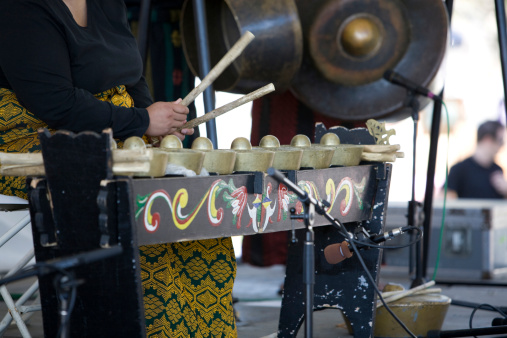Kulintang

The kulintang originated in South Asia, in the region of the Phillipines, Indonesia, and Malaysia. The kulintang is created by pot-shaped gongs of different sizes placed in a large wooden frame. The musician uses a thick wooden mallet to play melodies on the kulintang. It is frequently associated with the Maguindanao peoples of the Phillipines, where it was used prior to the introduction of Hinduism, Buddhism, Islam, and Christianity.
Gong and chime ensembles are very popular in southeast Asia. Today, a “Kulintang” refers to a group of five or six idiophones or membranophones, as in the picture below. It is played like a xylophone, and is the same in terms of being able to play various pitches and melodies.

Another, similar instrument is the gamelan from Thailand. Music for the gamelan has a very formal structure, unlike the kulintang, which allows the musicians freedom to improvise. These exotic instruments influenced composers during the impressionist period, such as Debussy, who used these new sounds in their own compositions.
Photo(s) Attribution
Description: Kulintang, Kulintang Ensemble
Source: thinkstock, wikimedia
Audio Attribution
Description: Kulintang - Taggungo
Source: wikimedia - PhilipDM

